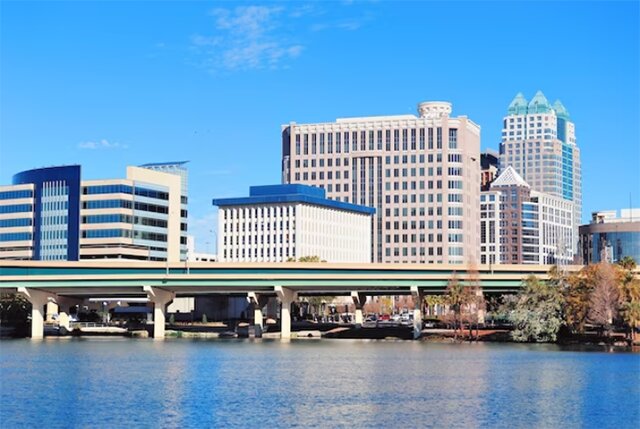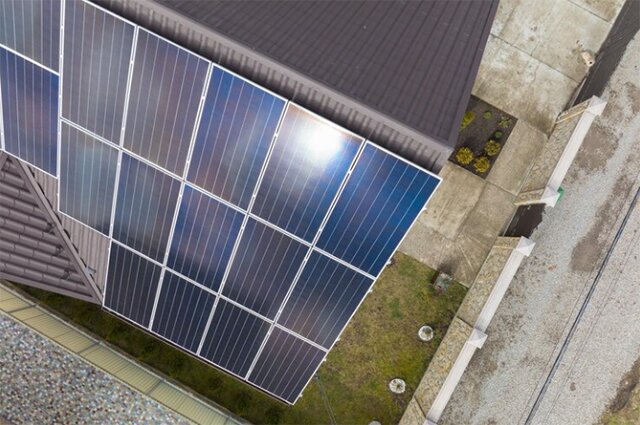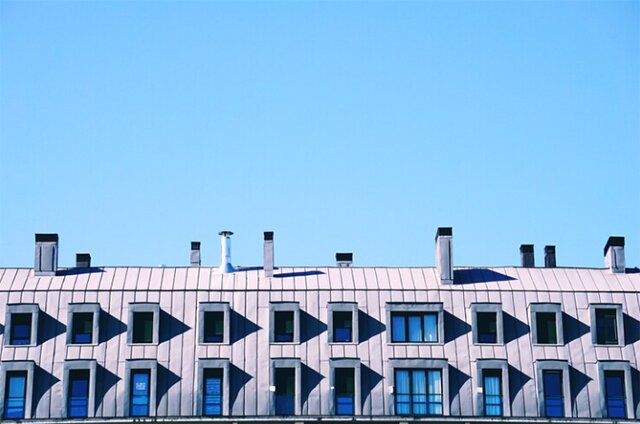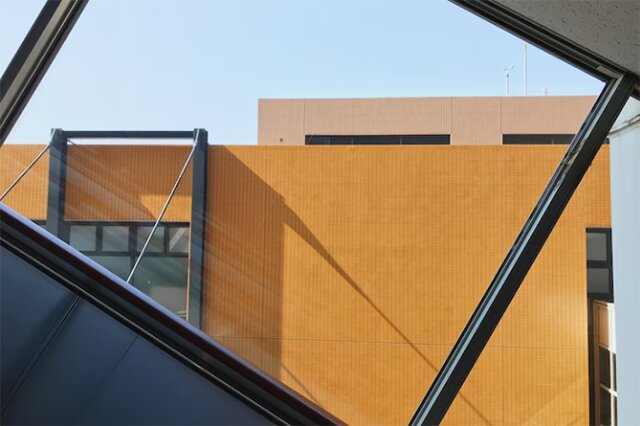Welcome to Commercial Roofing 101! If you’re new to commercial roofing, you may be wondering what it is and why it’s important. In this guide, we’ll discuss the basics of commercial roofing and how it differs from traditional residential roofing. We’ll also talk about some of the most common materials used in commercial roofs and how to maintain them. Lastly, we’ll cover the importance of hiring a professional contractor for your commercial roofing needs. So let’s get started learning all about commercial roofing!
Disclaimer: This article is intended to provide general knowledge about commercial roofing. It is not a substitute for professional advice from a trained and experienced roofing contractor. If you have any questions or require more specific information regarding your commercial roofing needs, please contact us at Advance Roofing LLC for a consultation. We are proud to have been providing the Spokane, WA area with top-notch, quality roofing solutions for many years.
What is Commercial Roofing?

Commercial roofing refers to the installation and maintenance of roofing systems that cover structures used for commercial purposes such as factories, office buildings, hospitals, shopping centers, and other large buildings. Commercial roofs are typically larger in size and more complex in design than residential roofs, and require specialized expertise to be installed and maintained. In this article, we’ll explore the basics of commercial roofing, including the different types of roofing systems, components, and materials used, as well as tips for choosing and working with a commercial roofing contractor.
Benefits of Investing in Commercial Roofing
When it comes to commercial buildings, the roof plays a critical role in providing protection against weather elements and ensuring the safety and security of the occupants. Investing in high-quality commercial roofing is an essential aspect of ensuring that the building serves its intended purpose and lasts for years to come. In this article, we will discuss the key benefits of investing in commercial roofing.
One of the most significant benefits of a good quality commercial roof is that it can help lower energy costs. With energy-efficient roofing materials, buildings can reduce their heating and cooling costs, resulting in more significant savings on utility bills.
A well-designed commercial roof offers a layer of protection for the building and its occupants. It acts as a primary barrier against rain, wind, snow, and other harsh weather elements, ensuring that the interior spaces remain dry and safe.
The rise in inches is a critical factor in commercial roofing. It refers to the vertical distance from the eave to the peak of the roof. The right rise in inches ensures that the roof is structurally sound and can withstand the weight of heavy snowfalls or other such weather events.
For commercial buildings, investing in a high-quality roof is crucial as it provides an attractive and professional appearance to customers and clients. An aesthetically pleasing building can enhance the business’s reputation and potentially lead to an increase in customers and revenue.
Investing in the right roofing material is necessary for commercial roofing. There are various types of roofing materials available, including thermoplastic polyolefin (TPO), single-ply roofing membranes, sheet metal, and asphalt shingles. Each material has its advantages and disadvantages, and it’s essential to choose the right one that fits the building’s particular needs.
Common Types of Commercial Roofs
When it comes to commercial roofing, there are two common types: low slope roofs and steep slope roofs. Each type has unique characteristics that make them suitable for different types of buildings, depending on their structural design and intended use.
Low Slope Roofs
Low slope roofs, also known as flat roofs, have a slope of less than 3:12. These roofs are commonly used in commercial buildings, including warehouses, factories, and retail spaces. The advantage of a low slope roof is that it allows for more usable space, which can be useful for rooftop equipment, solar panels and rooftop gardens.
Low slope roofs are typically covered in a waterproof membrane made of rubber or synthetic materials like TPO and PVC. These materials provide adequate protection from rain, wind and snow. However, ponding water can be an issue with low slope roofs. Ponding water occurs when water pools on the roof instead of draining off, which can lead to leaks and roof damage.
Steep Slope Roofs
Steep slope roofs, on the other hand, have a pitch of more than 3:12 and are commonly used in residential and commercial buildings. Steep slope roofs have a steeper angle which helps to ensure that water runs off quickly, reducing the risk of leaks.
These roofs are typically covered in shingles, tiles, or metal sheets. Shingles are the most common type of steep slope roofing material due to their affordability and ease of installation. Tile roofs are more expensive but have a longer lifespan and give a classic, ornamental look. Metal roofs are durable and can last for several decades but are also expensive.
Commercial Roofing Systems
There are various types of commercial roofing systems available, each with its own advantages and disadvantages. Here are the most common types of commercial roofing systems:
- EPDM: This roofing system consists of a synthetic rubber membrane that is glued or mechanically fastened to the roof deck. It is known for its durability and flexibility, as it can expand and contract with temperature changes. EPDM roofs are best suited for low slope roofs and are cost-effective.
- PVC: This roofing system is a single-ply membrane that is heat-welded, providing a strong seam that prevents water leakage. PVC roofs are water-resistant, fire-retardant and durable. However, they are among the most expensive roofing materials and not suitable for steep slope roofs.
- TPO: This roofing system is a single-ply membrane made of thermoplastic materials. It is a popular choice for commercial roofing due to its energy efficiency and long lifespan. TPO roofing systems are best suited for low slope roofs.
- Single-ply roofing membranes: Single-ply roofing membranes are available in various materials like EPDM, PVC and TPO, and are a cost effective option for commercial roofing. They come in large sheets that can be quickly installed, and the seam is sealed with adhesive or heat fusion.
Advantages and Disadvantages
Each type of commercial roofing system has its advantages and disadvantages. For instance, low slope roofs are cost-effective, provide extra space and are easy to maintain, while steep slope roofs are water-resistant and durable. EPDM roofing systems are cost effective and durable but can be prone to tearing, while PVC roofing systems are waterproof and withstand harsh weather conditions but tend to be the most expensive.
Costs and Factors
Various factors can influence the cost of a commercial roofing project, such as the size of the building, the type of roofing system, and the complexity of the project. While single ply roofing membranes are the most affordable option, steep slope roofs with shingles or tiles could cost more depending on the size of the building. Additionally, if the roofing project requires additional materials like insulation or drip edges, it could add to the overall cost of the project.
Asphalt Shingles

Asphalt shingles are a frequently utilized roofing material in North America for commercial buildings ability to offer strong protection against environmental factors. In this section, we will delve into the basics of asphalt shingles, including their composition, types, installation, and maintenance.
Advantages of Asphalt Shingles
Asphalt shingles have become a popular choice for commercial roofing systems due to their affordability, durability, and wide range of color options. They offer many advantages over other roofing materials, making them a preferred choice for commercial buildings.
One of the biggest advantages of asphalt shingles is their affordability. They are considerably cheaper than many other roofing materials, making them a popular choice for businesses looking for a cost-effective solution. Despite being cheaper, they still offer excellent durability, which is essential for commercial roofing systems.
In terms of durability, asphalt shingles are a great choice for commercial roofs as they can last for many years with proper maintenance. They are designed to withstand harsh weather conditions, including heavy rain, strong winds, and snow. They are also resistant to fire, which adds an extra layer of protection to the building.
Color options for asphalt shingles are vast, and they can provide a finished look to a commercial building, making it more aesthetically pleasing. The shingles come in different shapes, sizes, and colors, allowing the building owner to choose a style that complements the building’s exterior.
Despite their many advantages, it is important to note that asphalt shingles do not last as long as other, more expensive commercial roofing systems. However, they still offer a cost-effective solution with excellent durability, making them a popular choice among business owners.
Disadvantages of Asphalt Shingles
While there are many advantages to using asphalt shingles as a commercial roofing material, there are also several disadvantages that business owners should be aware of.
Firstly, asphalt shingles are susceptible to damage from extreme weather conditions such as hail or strong winds. While they are designed to withstand harsh weather, they may not hold up as well as other more expensive roofing systems.
Another disadvantage of asphalt shingles is their environmental impact. The manufacturing process for asphalt shingles requires the use of non-renewable resources, and they are not recyclable once they have been removed from a building. This can make them a less eco-friendly option compared to other roofing materials.
Asphalt shingles also have the potential for staining, particularly in areas with high levels of moisture or pollutants. This staining can impact the appearance of the building and require additional maintenance.
Lastly, asphalt shingles have a shorter lifespan compared to other commercial roofing systems. While they can last for many years with proper maintenance, they may not provide the same longevity as more expensive roofing options.
Metal Roofs

Metal roofs have become increasingly popular in recent years due to their durability, energy efficiency, and aesthetic appeal. This versatile roofing material can be used for both residential and commercial buildings, and can come in a variety of styles and colors. If you’re considering a metal roof for your commercial building, it’s important to understand the basics of this roofing system and how it can benefit your business. In this article, we’ll explore the types of metal roofs, their advantages, and some important considerations for installing and maintaining this type of roofing system.
Advantages of Metal Roofs
When it comes to commercial roofing, metal roofs have gained a lot of popularity in recent years due to their numerous benefits. Metal roofs are known for their longevity, durability and resistance to damage from fire, wind and hail. In this article, we will discuss the advantages of metal roofs.
One of the most significant advantages of metal roofs is their longevity and durability. Metal roofs can last for 50 years or more, much longer than traditional asphalt roofs, which typically last for only 20-25 years. Additionally, metal roofs are extremely durable and can withstand harsh weather conditions and extreme temperatures. This means that metal roofs are less likely to be damaged in severe storms or wildfires.
Another advantage of metal roofs is the variety of styles and colors available. Unlike traditional asphalt shingles, metal roofs can be customized to match the aesthetic of the building. Metal roofs can come in various styles and colors, including traditional metal, standing seam, and metal tile. This means that business owners can select a metal roofing system that matches the existing aesthetic of their commercial building.
Investing in a metal roof can be cost-effective in the long run as they require minimal maintenance and repair. Metal roofs are relatively low maintenance compared to traditional roofing materials. Since they are durable and withstand harsh weather conditions, they require far less maintenance than other materials, which need frequent repairs or replacement. This can save businesses time and money in the long run. As a sustainable option, metal roofs can also be recycled at the end of their lifespan.
Disadvantages of Metal Roofs
Although metal roofs offer numerous benefits, they may not be the best fit for all commercial buildings. It is essential to consider their disadvantages as well before making a decision. Some of the disadvantages of metal roofs are as follows:
Firstly, metal roofs are typically more expensive than traditional roofing materials. While they may offer long-term cost savings due to their durability, their initial installation cost is significantly higher. This can be a concern for businesses with budget constraints.
Secondly, metal roofs require professional roofing contractors for installation and maintenance. This specialized labor can add to the overall maintenance costs, making metal roofs relatively costly in the long run.
Thirdly, metal roofs can be relatively noisier during heavy rainfall compared to other roofing materials. The noise level can be a disturbance for workers in the building.
Fourthly, if your commercial building is situated in an area with extreme weather conditions, there could be a risk of ice damming. Ice damming can cause dents and scratches, which can impact the appearance and lifespan of the roof.
Lastly, walking on a metal roof can be dangerous, compared to other roofing materials. Slippery surfaces and steep slopes can make metal roofs difficult to navigate, potentially causing accidents and injuries.
Sheet Metal Roofing

Sheet metal roofing is a popular choice for commercial buildings due to its durability and ease of installation. With proper installation and maintenance, sheet metal roofing can last for decades and provide a cost-effective solution for businesses. In this article, we will discuss the basics of sheet metal roofing, including its benefits, installation process, and maintenance requirements, to help you make an informed decision for your commercial building.
Advantages of Sheet Metal Roofing
Commercial buildings need to have a reliable roofing system that can withstand the harsh conditions of the outside environment. This is where sheet metal roofing comes in as an excellent option. Sheet metal roofing is known for its durability and long-lasting capabilities, making it a popular choice for commercial roofing. Here are some of the advantages of using sheet metal roofing.
First and foremost, sheet metal roofing is a low-maintenance option. Once installed, it requires very little upkeep and repair over the years. This means that the building owner won’t have to spend a considerable amount of money on maintenance costs throughout their roof’s lifespan.
Sheet metal roofing is composed of different types of metals like steel, aluminum, and copper. Each of these metals has unique benefits that make them suitable for different commercial roofing projects. For example, steel sheet metal roofing is an affordable and durable option, while aluminum is lightweight and corrosion-resistant. On the other hand, copper sheet metal roofing offers an attractive and long-lasting look that can last for up to a century.
Additionally, sheet metal roofing is energy efficient, contributing to a building’s overall sustainability. Sheet metal roofs reflect sunlight, rather than absorbing it, during the hot summer months. This helps to reduce the amount of energy needed to cool the building, leading to lower energy bills and a reduced carbon footprint. Furthermore, sheet metal roofing can be made from recycled metals, reducing the carbon footprint even further.
Disadvantages of Sheet Metal Roofing
While sheet metal roofing has many advantages, there are also some disadvantages that need to be considered before choosing this type of material for a commercial roofing project.
One significant issue with sheet metal roofing is its potential for noise. During heavy rain or hailstorms, the sound of raindrops hitting the metal roof can be quite loud. This can be a problem for commercial buildings that require a quiet environment, such as hospitals or schools. However, proper insulation and underlay can help to mitigate this issue.
Another disadvantage of sheet metal roofing is limited style options. While there are many metal alloys and finishes available, sheet metal roofing still has a distinctive look that may not be suitable for every commercial building design. In contrast, other roofing materials like asphalt shingles, wood shingles, or clay tiles have more varied styles and patterns available.
Maintenance costs and repair issues are also potential concerns with sheet metal roofing. While it is a low-maintenance material and requires little upkeep, it is not immune to damage. Improper installation and weather-related issues can cause damages that need repairs. These repairs can be costly and may require the expertise of a professional roofer.
One of the most significant downsides of sheet metal roofing is its expensive installation cost compared to other roofing materials like asphalt shingles. The cost of materials and labor can make it challenging for building owners on a tight budget to invest in sheet metal roofing. However, its durability and energy efficiency can make up for these upfront costs in the long run.
Types and Costs of Commercial Roofs

Commercial roofing systems can vary greatly in types and costs depending on the needs and budget of each building owner. Understanding the different options available can help make informed decisions when it comes to choosing the ideal roof for any commercial building. In this article, we will explore the different types of commercial roofs and their respective costs to provide a comprehensive overview of commercial roofing basics.
Factors Impacting Cost of a Commercial Roof

When it comes to the cost of a commercial roof, there are several key factors to consider. These factors can greatly impact the final price of your project, and it’s important to understand them before you start budgeting for your new roof.
- Commercial roof size is one of the most important factors to consider. Obviously, the larger the roof, the more materials and labour will be required to complete the job. In addition, larger roofs are more complex to work on, which can increase the overall cost of the project.
- Roofing material is another important factor to consider when looking at the cost of a commercial roof. There are a wide variety of roofing materials available, each with its own price point. For example, asphalt shingles are a common and relatively affordable roofing material, while metal roofs and slate shingles tend to be more expensive.
- Labour costs are another key factor that can impact the price of a commercial roof. The complexity of the roofing job and the skill level required of the workers can both contribute to the final labour costs.
- Location is also an important factor to consider. Depending on the local market and demand for roofing services in your area, prices may be higher or lower than average. Additionally, environmental factors such as harsh weather conditions or the need for special permits can impact the final price.
- Finally, the complexity of the roofing job is another important factor to consider. Roofs with multiple levels, unusual angles, or other unique features will require more work to complete and may be more expensive.
While there are many factors that can impact the cost of a commercial roof, there are steps you can take to manage costs without sacrificing quality. For example, choosing a less expensive material or simplifying the design of your roof can help keep costs down. It’s also important to get a detailed quote from a commercial roofing contractor before you start your project to ensure that you know exactly what you’re getting and how much it will cost.
Conclusion
In conclusion, commercial roofing is a complex issue and requires careful consideration of several factors. The size, materials, labour costs, location, and complexity of the job all have an impact on the final cost of a commercial roof. Understanding these factors and taking steps to manage costs can help ensure that you get the ideal roof for your building at a price you can afford.



 509-201-4190
509-201-4190
